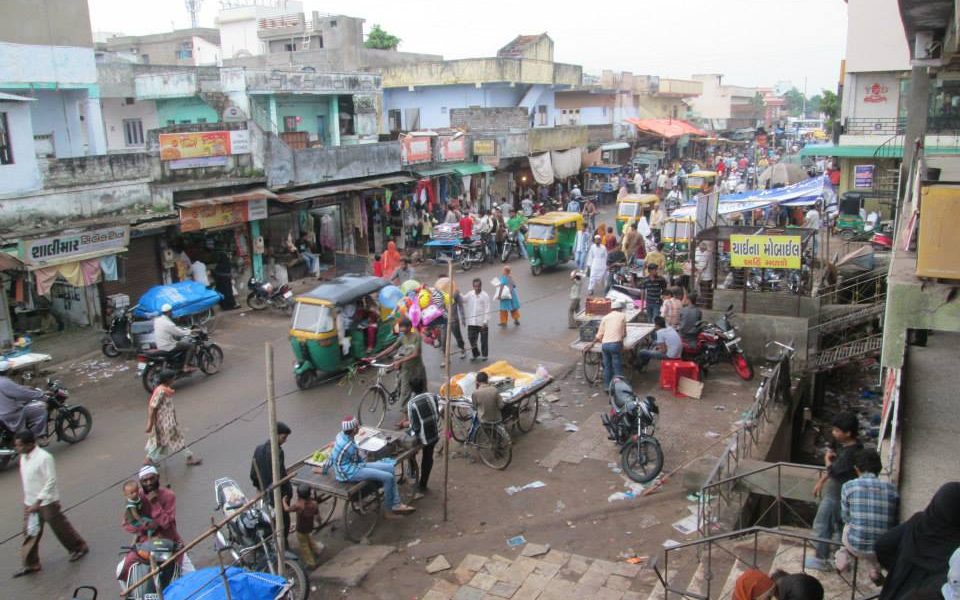
The Gujarat Prohibition of Transfer of Immovable Property and Provision for Protection of Tenants from Eviction from Premises in Disturbed Areas Act, 1986 (Government would have passed another bill in Lok sabha while you read the names) or in short, Disturbed Areas Act 1986, was meant to arrest the distress sale of assets in the areas frequently affected by communal riots in 1980s and 1990s. As per the law, any purchase of immovable property has to be approved by the collector after due diligence to ensure that the seller is not under any pressure to sell the property and he/she is getting the fair market price. If not adhered to, it can attract an imprisonment of 6 months or a fine of Rs 1000. The Act is in implementation in many areas of Ahmedabad, Vadodara, Surat, Bharuch, and Godhra.
When the Act was implemented, the land mafias used to take advantage of the insecurity of people during the time of riots and coerced them to sell their property at a cheaper rate. The Act was introduced to save people from such exploitation. However, over the years, the Act has become a tool to fuel Hindu-Muslim divide in Ahmedabad, the largest city of Gujarat. It has 770 areas classified as the disturbed area, which is close to 40% of the city, even though the last case of a riot happened 16-17 years back.
Recently, Paldi region in Ahmedabad became the battleground between the two communities over the implementation of the Act. It was alleged by an organisation named Nagrik Seva Samiti, part of Hindu Ekta Manch which is affiliated to Vishwa Hindu Parishad that Muslims had been engaging in ‘Land Jihad.’ The bone of contention was an apartment building which had been given to the Muslim developers for redevelopment. Owing to the lack of clarity on the area’s inclusion in Disturbed Areas, the builders did not take the permission under the Act for redevelopment. However, when the authorities realised their mistake after complaints from the activists from Nagrik Seva Samiti, permission was sought and was subsequently granted. Nevertheless, the activists persisted in their movement and were successful when Ahmedabad’s collector office revoked the building use license granted to the builders for redevelopment because they had violated the disturbed areas act. The Gujarat high court has since issued a stay on collector’s order after the builders approached the court.
“Muslims should stay in certain restricted areas of the city and let non-Muslims live peacefully and safely elsewhere. The whole point of the Disturbed Areas Act is to ensure this safety.”
-Jigar Upadhyay (Nagrik Sewa Samiti)
The incident was noticed by the Gujarat Chief Minister who asked the officials to examine the Act and fill loopholes. The focus has shifted to maintain the religious composition of the disturbed area. As a result, the Act was amended in 2018, which made the transfer of property harder in disturbed areas. As per the amendment, the collector also has to ascertain the possibility of polarization in the area because of the sale owing to change in demographic. Moreover, the Act also has a provision of the formation of a Special Investigation Team (SIT) to probe violations. The punishment has been increased to 6 years of imprisonment and Rs 1 lakh fine.
A PIL has been filed in Gujarat High Court to abolish the Act as it goes against the right to property, right to freedom of movement, and right to choose. At a time when the country is rejoicing the repeal of Article 35A in Kashmir over the grounds of the right to property, the existence of such laws goes against the idea of India.
Moreover, the Act has also caused rapid ghettoisation of the Muslim localities, at least in Ahmedabad. The lack of housing societies in the city, partly because of the Act has forced the Muslims in Ahmedabad to make Juhapura, a Muslim ghetto of close to 4,50,000 people -one of the largest in India, their abode. Such is the perception that it is called ‘Mini Pakistan’ by the locals of Ahmedabad. Nobody is asking the question as to why such policies that do more harm than good to the social fabric exist, in the first place?
There is one more aspect of the segregation that few people talk about: the effect on the political representation of Muslims. The ghettoisation reduces the Muslim population in the areas to such an extent that they are not treated as a voting block, and hence their demands are not heard by any political party.
Aman Mansuri is a student of IIM Ahmedabad
SIGN UP FOR COUNTERCURRENTS DAILY NEWS LETTER











































